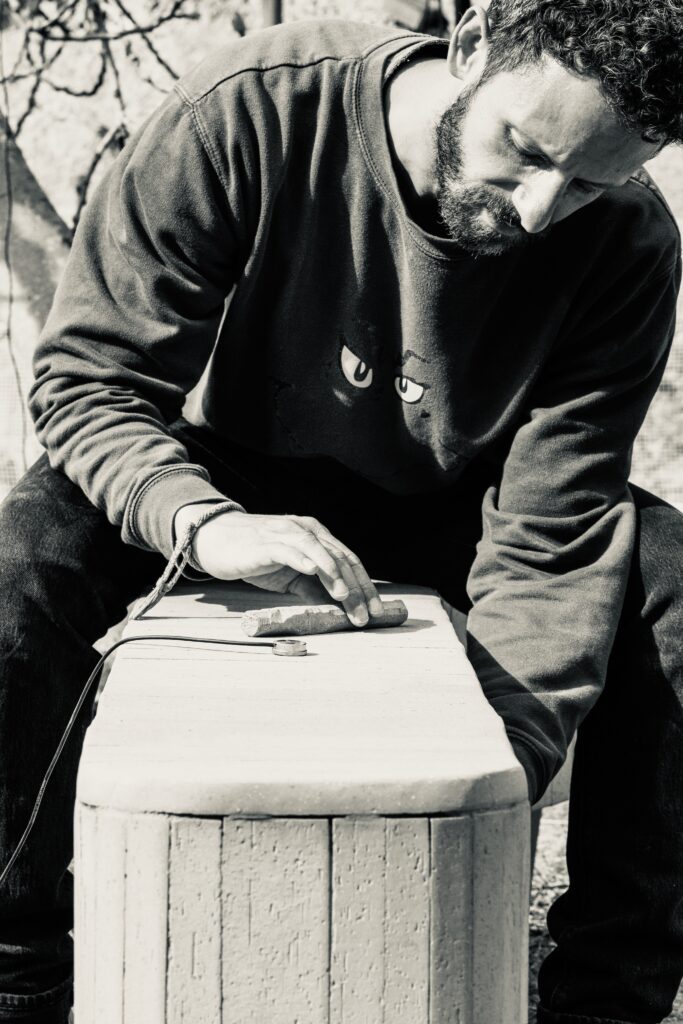About
Bruno Zamborlin, PhD, is an AI researcher and artist, recognized for revolutionizing human-computer interaction through his startups: Mogees, HyperSurfaces, and HyperSentience. His work focuses on transforming everyday objects and surfaces into interactive, intelligent entities, thereby redefining our interaction with the space and between us. Based in London and Milan, Bruno Zamborlin is a four times TEDx speaker and honorary research fellow at Goldsmiths, univ. Of London. His artworks have been showcased at venues like the Venice Biennale and the London Victoria & Albert Museum.
Art Practice
■ At the core of Zamborlin’s work is a keen desire to create connections—whether between friends, strangers, or the spaces that envelop them. By transforming everyday objects and surfaces into interactive canvases, Zamborlin invites participants into a shared experience, turning mundane moments into opportunities for discovery and connection, fostering a sense of community and shared wonder.
■ Zamborlin’s work gives voice to the world around us. Through his pioneering application of vibration sensors and algorithms, spaces and objects gain the ability to respond to human touch, movement, and even atmospheric changes, effectively “speaking” to us in a language of light, sound and data. This interaction blurs the lines between the animate and inanimate, inviting observers to reconsider their relationship with their surroundings.
■ In a society increasingly mediated by touchscreens and virtual interfaces, Zamborlin’s work is a reminder of the richness of the physical world. By emphasizing tactile engagement and the sensory experiences of the environment and people around us, he offers a counter-narrative to the digital disconnection, rekindling an appreciation for the tangible and fostering a deeper, more meaningful interaction with the world.
Contacts
